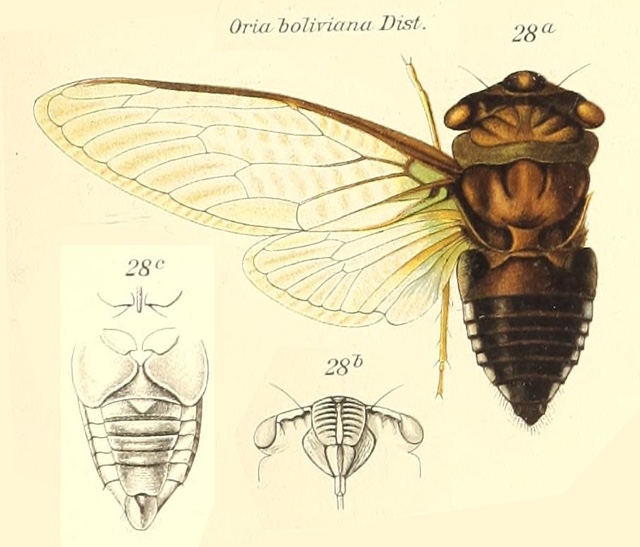Cosmopsaltria meeki (Distant, 1906) used to be called Haphsa meeki. Yes, its name has changed since 1913. It was moved into the Cosmopsaltria genus. The Haphsa genus still exists.
This cicada is found in New Guinea.
Scientific classification:
Family: Cicadidae
Subfamily: Cicadinae
Tribe: Cosmopsaltriini
SubTribe: Cosmopsaltriaria
Genus: Cosmopsaltria
Species: Cosmopsaltria meeki (Distant, 1906)

The image says Haphsa meeki, but the newest name of this cicada is Cosmopsaltria meeki.
Cosmopsaltria genus description by W. L. Distant:
Characters. — Body moderately long and robust, head as long as breadth between eyes, and including eyes as wide as base of mesonotum, with the front not twice as broad at base as anterior margins of the lobes of vertex, lateral margins obliquely continuous to front or very slightly sinuate; pronotum about as long as head, its lateral margins scarcely ampliated, but distinctly toothed or angulated; mesonotum slightly longer than pronotum ; abdomen short, about as long as space between apex of head and base of cruciform elevation; tympana covered; opercula in male broad, either just or longly passing middle of abdomen, well separated and not overlapping, more or less concavely sinuate on each side at basal areas, their apices rounded or obliquely truncate; rostrum reaching, sometimes passing, the posterior coxae; tegmina and wings hyaline; greatest breadth of tegmina about a third of length, venation normal, basal cell much longer than broad.
References:
- The illustration and genus description comes from the journal Genera Insectorum, and a specific article from 1913 by W. L. Distant titled Homoptera. Fam. Cicadidae, Subfam, Cicadinae. Read it on the Biodiversity Heritage Library website.
- Current species name verified using Allen Sanborn’s Catalogue of the Cicadoidea (Hemiptera: Auchenorrhyncha).








